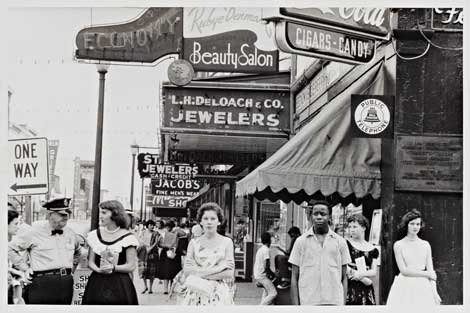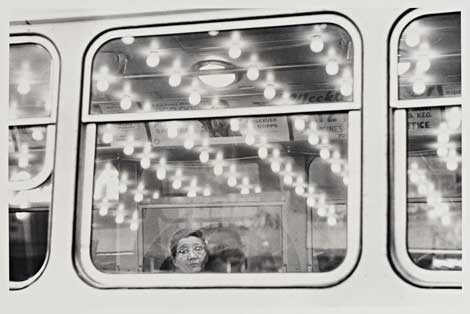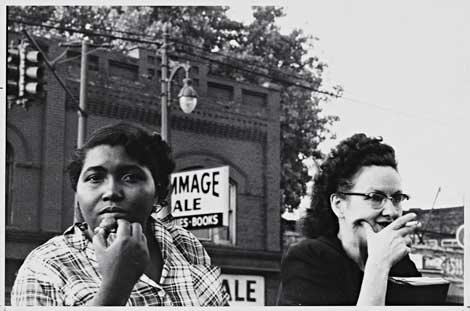Your cart is currently empty!
Robert Frank in America

In 1955, the 31-year-old Swiss photographer Robert Frank went looking for America, driving 10,000 miles across 30 states, in a kind of photographic enactment of Jack Kerouac’s beat novel, On the Road. If the novel functions today as a rite of passage for disaffected young adults (in the way that Catcher in the Rye functions for teens), it also indicts the hollowness of mainstream American culture. So do Frank’s photographs—grainy, in high-contrast black and white, and so casual-looking in 1959, with their off-cropping. When a selection of 83 of Frank’s 1000 initial print selections—culled from 27,000 negatives—was published in The Americans (with an introduction by Kerouac: “You got eyes.”), many photographers, trained in the sharp-focus f/64 tradition, reviled (to quote one of them) their “meaningless blur, grain, muddy exposures, drunken horizons, and general sloppiness.”

Their subsequent impact, however, has been enormous, not just for the formal innovations, creating a new, street aesthetic—and the compositions that looked scattershot then look inevitable now—but for the unsentimental, outsider’s view of ’50s America that ran counter to the cheery, prosperous vein promulgated by Norman Rockwell’s Saturday Evening Post covers lingering in Ronald Reagan’s rosy vision of mythic small-town life: the WASP utopia. Instead, in Frank, the barriers of race and class are everywhere evident, as is the loneliness of American life, with its go-getter individualism carried sometimes to heartless extremes (as in the rhetoric and results of the recent midterm elections). Frank, on being subjective and personal: “I developed a tremendous contempt for Life [magazine], which helped me. You have to be enraged. I also wanted to follow my own intuition and do it my own way, and to make concessions—not make a Life story.” Ed Ruscha: “Robert Frank came out here and he just showed that you could see the USA until you spit blood.”

The 50th anniversary of The Americans was celebrated in 2009 with proper recognition of Frank’s monumental achievement: a redesigned reissue of the book and a show at the National Gallery of Art in Washington. Now comes Robert Frank in America, a show initiated by the Cantor Arts Center at Stanford, which provides a more complete picture of Frank’s oeuvre before the 1960s, when, fearing to repeat himself, he abandoned photography and became a filmmaker. We who revere his work would have loved his unsentimental take on the past 50 years (and especially the past 30). But the work of those who were influenced by him, including Diane Arbus, Lee Friedlander and Joel Meyerowitz, who watched Frank at work, “twisting and tuning, bobbing, weaving,” and quit his job to become a street photographer, will still do, nicely.
The 131 photographs in the show include 28 carryovers from The Americans, and were selected, primarily from the Cantor’s collection, by the former curator of photography at the Museum of Modern Art, Peter Galassi. A triton-printed catalog is available, with the images grouped and sequenced as thoughtfully as The Americans. Old men on small-town streets, pedestrian traffic, picnickers, bus riders, lunching workers, dreary hotel vistas, incomplete movie marquees, drugstore restaurants, factory floors and, of course, cars, signs, flags, parade onlookers, jukeboxes, movie starlets, lonely highways and smiling politicos. Frank shows mass-market society of the spectacle in all its mundane ordinariness with brutal honesty. “It’s a myth,” he said, ”that the sky is blue and that all photographs are beautiful.” And if truth is beauty, a terrible beauty was born in his work.
“Robert Frank in America”
Through January 5, 2015
Cantor Arts Center at Stanford University
Pigott Family Gallery; museum.stanford.edu.